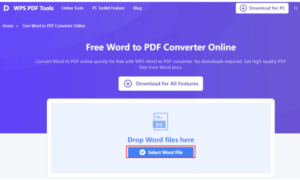In recent years, drone technology has revolutionized numerous industries, from film production to agriculture. Another intriguing application lies in geography education, especially for real-time mapping. This innovation brings both theoretical lessons and practical exercises to life, providing students with a hands-on experience that’s both engaging and educative. Let’s explore the step-by-step process of integrating drones into your geography curriculum.
Why it is Necessary to Implement Technologies in Education
In today’s digital age, integrating technology into education isn’t just a luxury; it’s a necessity. Students grow up in a world where technological advancements shape daily experiences, interactions, and job markets. Many educators and platforms, such as WritingUniverse.com, emphasize the importance of merging traditional teaching methods with modern tech solutions. Educational methodologies must evolve and align with the latest technologies to prepare students adequately for this fast-paced world.
Using tools like drones in geography, inspired by resources on grabmyessay, not only enhances the learning experience but also instills in students the adaptability and proficiency required in modern professions. As educators, we must ensure our teaching methods resonate with the times, sparking curiosity and fostering a forward-thinking mindset in our students. the times, sparking curiosity and fostering a forward-thinking mindset in our students.
Navigating the World of Drones in Education
Drones have the potential to revolutionize education, but how can educators leverage this technology efficiently? Here’s a roadmap to integrating drone technology in geography lessons seamlessly:
1) Laying the Foundation: Comprehending the Basics
Understanding the fundamental principles of drone technology sets the stage for effective implementation. Drones, often called Unmanned Aerial Vehicles (UAVs), are autonomous flying gadgets managed remotely or through pre-defined software instructions. On the other hand, real-time mapping refers to the instantaneous creation of maps from the data these UAVs collect, offering an immediate visual perspective that far outstrips traditional methods.
2) Prioritizing the Right Tools: Equipment Selection
The drone market is flooded with options. When selecting educational initiatives, there are three primary considerations. First, the clarity of imagery is paramount, so a high-resolution camera is necessary. Second, the duration a drone can remain in the sky directly influences the data one can obtain; hence, longer flight times are preferable. Lastly, the safety of students and equipment is crucial, necessitating drones equipped with features like obstacle detection and automatic return.
3) Ensuring Compliance: Securing Permissions
Launching a drone isn’t as simple as pressing a button. Legal considerations come into play. Familiarizing oneself with local drone operation regulations, which may vary significantly across regions, is essential. Additionally, flying a drone may necessitate specific certifications or licenses, especially for instructional reasons.
4) Bridging Technology and Learning: Curriculum Integration
Armed with the right tools and permissions, the next step is blending drone tech with geographical teachings. This involves introducing students to the theoretical underpinnings of drones, their broader industrial implications, and their utility in geography. Further, hands-on exercises could involve students in tasks like setting drone trajectories, analyzing real-time geographical data, and mapping physical landmarks.
5) Take to the Skies: Conducting the Flight
This phase is where concepts meet reality. Effective flight planning ensures the drone navigates the intended area, with contemporary drone software often facilitating this through automated routes. As the drone embarks, students get a live feed, presenting opportunities to explore geographical highlights and discuss various terrains.
6) Reflection and Discovery: Post-flight Analysis
Once the drone safely returns, the learning continues. The raw aerial data transforms comprehensive maps, a process made swift by real-time mapping tools. Students can immerse themselves in discussions, identify unique geographical traits, compute vast regions, and juxtapose their theoretical learnings with practical outcomes.
7) Keeping Pace with Change: Continuous Learning
The tech world is in perpetual motion, and drones are no exception. Participating in periodic workshops and staying engaged with the broader drone community is beneficial. Online forums, especially those dedicated to drone aficionados, can provide invaluable updates, best practices, and innovative ideas.
Educators can ensure they harness the potential of drones by following this roadmap, offering students both theoretical insights and hands-on experiences.
Final Thoughts
Introducing drone technology into geography education makes the subject more engaging and equips students with practical skills relevant to today’s digital age. With careful planning, educators can seamlessly blend traditional teaching methods with innovative technology, preparing students for the future while making learning fun and interactive.
By integrating drones into geography curriculums, we’re not just teaching geography; we’re molding future geographers, environmental scientists, and perhaps even drone pilots. So, take the leap, embrace the tech, and watch your lessons soar to new heights.
Author’s bio
Elaine Bailey is a geography educator passionate about integrating technology into classroom settings. With over a decade of experience in teaching and drone operation, she consistently seeks ways to bring real-world applications into her lessons, particularly in real-time mapping. Beyond the classroom, Elaine contributes to various educational journals and forums, sharing her insights on the confluence of geography, technology, and pedagogy.



































